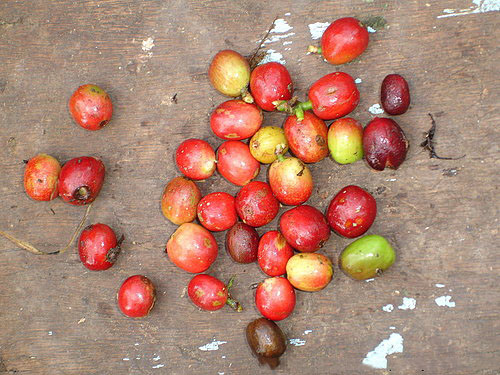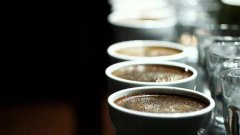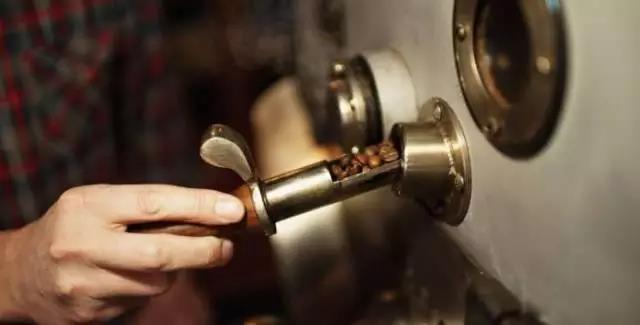A coffee tree is not a tree? The cultivation method of Coffee and the Standard of fertilization in Coffee Garden

Professional coffee knowledge exchange more coffee bean information please follow the coffee workshop (Wechat official account cafe_style)
What are the fruits and seeds of coffee? What the coffee beans look like.
Good coffee quality and coffee type depend on the way coffee is cultivated--
Elements of coffee cultivation (conditions for coffee cultivation)
Although the coffee tree is called a tree, it is actually an evergreen shrub. If it is not trimmed, it can be as high as 3muri 9m. There is a glossy dark green at the top of the leaf and a dull light green at the bottom. The leaves are 7.5 mm long and 15 cm in length, which is opposite. Many small white flowers can be seen when blooming, so the appearance of the coffee tree is snow white. The fragrant flowers wither after a few days.
And small berries begin to develop. The color changes from dark green to deep red when ripe, and the fruit ripens about 7 months after flowering. Under the skin of the fruit, there is fleshy pulp, which is covered with a sheepskin-like skin (parchment skin), which is usually wrapped in two green coffee beans. Outside the beans is a fragile, close and almost transparent silver film (silver skin).
Coffee trees usually blossom once a year, but they may blossom more than once in rainy climates, as is the case with coffee in Taiwan. Flowers, green berries and ripe berries can often be seen on a tree at the same time. Coffee trees can usually be harvested within five years of planting, and can reach a good yield within eight years. Generally speaking, a considerable yield can be maintained within 20 years in 15mur. if the soil is in good and fertile condition, it can be extended to longer. Each seed produces an average of 0.5 to 0.7 kilograms of coffee beans per year, but it usually exceeds this number. Coffee trees generally need a stable environment, it can not resist frost, nor can it tolerate fairly high temperatures for a long time. And in areas with heavy rainfall, the varieties cultivated in alpine areas ranging from one thousand to three thousand meters above sea level are the best. Therefore, the tropical region and the temperate zone where coffee is suitable for cultivation in terms of climate and soil, that is, from about 28 degrees north latitude to 30 degrees south latitude, we call it the coffee zone (coffee zone). The following is a brief introduction to the natural conditions and planting procedures of coffee.
One of the characteristics of a coffee tree is that its fruit can bear fruit several times a year, and another is that flowers and fruits (also known as cherries) coexist at different stages of ripening. The style of the whole coffee industry is influenced by the fickle nature. If the fruit is too ripe, the beans in it will rot. If it is not ripe enough, the beans picked will not ripen by themselves. So bean pickers often go back to the same tree several times to look for ripe fruit-trying to get only 2 pounds of green coffee beans, usually an average of 2 pounds a year. Keep this in mind the next time you buy coffee.
There are also differences in the growth temperature of species. For example, the optimum temperature for Arabica coffee is 18 ℃-22 ℃, and that for Romsta coffee is 22-27 ℃. Brazil is the region with the largest coffee production in the world, and the annual average temperature of its cultivation land is 19-20 min. If the winter temperature is too low, the cultivation of coffee is difficult, or even die, because the low temperature often harms the development of young plants, and the harvest decreases, Arabica coffee is damaged if it is kept at a low temperature of 5 ℃ for several days, while extremely high temperatures lead to luxuriant branches and leaves and a decline in coffee quality. Therefore, in tropical high-temperature places, coffee is not planted in the lower Mid-levels (hillside), but not over the frost line (the lowest temperature is 0 ℃ line). Generally speaking, Arabica coffee grows between 600m above sea level and frost line, that is, between 600m and 2000 m. Romsta Coffee and Liberica Coffee are suitable for growing below 600 meters above sea level.
Rainfall amount
The development of coffee requires sufficient moisture. The annual rainfall should be at least 1000 mm, and the maximum should not exceed 3000 mm. The rainfall should not be excessive or moderate. If there is too much sauce for a time, or if it does not rain for a long time, it will affect the coffee. But less rain in winter is good for harvest and growth. However, the need for coffee and water varies with the type. Arabica is more suitable for dry environment, while Romsta Coffee and Liberica can only be cultivated in warm and humid tropical climates.
Wind and sunshine
Wind is also one of the important factors in coffee cultivation. Arabian species and large-leaf coffee are afraid of wind damage by branches. Coffee cultivated in sandy land can uproot the trees or lodge them because of the strong wind after rain. when the coffee is fruited, it has been subjected to a storm and the harvest has been reduced. In addition, there is often a wind with salt in the seaside areas, which can hinder and damage the growth of coffee, and it will take a long time to recover, so the cultivation of coffee has been chosen to compare the Bifeng area or to set up windbreaks. In addition, in terms of sunshine, coffee grows under shaded conditions in the country of origin of Abyssinia, so planting taller shade trees in some areas (such as Africa, Java, and so on) has prevented short coffee trees from being directly exposed to sunlight. However, the need for shade trees has also been debated all over the world.
Topography and soil
Coffee is not strict with the soil, but the saline-alkali soil or strongly acidic soil near the sea is not suitable, but the gentle slope with deep soil layer and rich organic matter is the best, and the volcanic soil and newly reclaimed soil after deforestation are also suitable, and the clayey soil still has gravel. If the drainage is good, it is also worried about its growth. Romsta Coffee Coffee is sensitive to soil acidity, uncomfortable with coastal soil, and newly reclaimed land. The weathered soil of crushed granite grows better, while Arabica coffee is on the hillside and produces better quality coffee. The world's best coffee Blue Mountain Coffee (blue mountain) the best planting site, has been weathered granite soil, that is, on the slopes of Jamaica's extinct volcano area, the soil quality is superior, the climate is suitable, that is, the first choice of all conditions.
Cultivation mode
Breeding
Coffee breeding can be divided into sowing and asexual reproduction, generally speaking, the most economical cultivation still uses seed propagation, because it is simple and easy, and can obtain most seedlings, but Arabica flower multi-cross fertilization, its later generation type and quality is not fixed as a disadvantage. The following is a general description of coffee reproduction.
Seed propagation
The seeds used for coffee reproduction are mostly the seeds of asexual reproduction trees, the so-called asexual reproduction seeds, and it is appropriate to take fully mature seeds from the mother plants with older age, strong growth, rich yield and free of diseases and insect pests. As a seed fruit, it is best to remove the skin and flesh manually, because the use of machinery is often easy to damage the seed coat, and then after selection.
When sowing, earthen pots, wooden boxes or bamboo cages can be used when the amount of seed is small. If the quantity is large, choose the land with good drainage and fertile and loose quality, set up a seeding bed, the bed width is 1mi-1.4m, the distance between the sowing rows is 2m-5cm, germinate for 8 weeks after 5mi, and then transplant into a larger nursery when it grows into four leaflets, usually 1750 trees per hectare is enough. In addition, if the distance between sowing rows and plants is increased by 15 centimeters, it is not necessary to pull out. The nursery can be planted after 18 months of nursery cultivation.
Asexual reproduction
There are usually two methods of asexual reproduction of coffee trees: grafting and cutting. its main purpose is to be used for breeding as a gene bank, which has eliminated natural bad variants.
1. Grafting propagation: on the one hand, this method can be used in the field or nursery to reproduce the seedlings needed, on the other hand, it can preserve the original seedlings, in other words, this kind of operation can continue to provide a small number of seedlings, and can continue to reproduce excellent characters. Grafting is usually used in coffee trees. The scion branch must have a node for 15 months and is embedded in the stem pith of the same age wood (rootstock).
2. Cutting propagation, which is more economical and simple than grafting method, can propagate most seedlings in a short period of time, and can eliminate the influence of wood heterogeneity. Generally, glass seedbed is used for cutting work, and the temperature, humidity and light can be adjusted at will. The cuttings are selected from robust shoots with 6 pairs of leaves. The cuttings are about 8cm long and have only one leaf. The cuttings usually take root in 8 weeks after implantation, and the cuttings can be replanted 4 months later.
Fertilizer application
Coffee trees are not highly absorptive crops. They are planted in newly reclaimed woodlands with fertile soil, and do not apply fertilizer for several years at the earliest. They will not be fertilized until 5 years later, especially the Arabica species planted in the highlands. The fertilization of coffee trees, in addition to the natural reduction of fallen leaves, is generally supplemented by the waste pericarp of coffee as compost, or the use of human and animal fertilizer and planting green manure. In a word, the application of organic fertilizer is the most effective for the growth of coffee. Japanese Kato reported that coffee trees can apply fertilizer in accordance with the following criteria for 6 years:
Table the standard of fertilization for coffee plantations (kg kg / ha ha)
Fertilizer name fertilizer application contains three elements.
N P205 K20
Whale fat 37.500 39.750 4.500 ─
Stable manure 262.500 15.225 7.875 ─
Wood ash 15.000 ─ 5.025 13.425
Calcium superphosphate 11.200 ─ 21.375 ─
Potassium sulfate 7.500 ─ ─ 7.600
Liquid fertilizer 187.500 10.688 ─ ─
Total 352.200 44.287 38.755 21.025
Percentage 42.5% 37.3% 20.2%
Management: shading
There are different opinions on the shading benefits of coffee gardens. Shade trees are not planted in places such as Brazil and Hawaii, but they are still used to growing in Africa, Java, Sumatra, the Philippines and Vietnam. In terms of its advantages, there are the following points:
1. Coffee trees can live longer.
two。 It can keep the coffee garden moist.
3. It can prevent the growth of weeds and the loss of topsoil.
4. It has windproof effect, especially in flowering stage, which can prevent the rate of grain saving from being affected by strong wind.
5. There is an adjustment of output so as not to overharvest or fail.
6. It can reduce the temperature difference and make the coffee grow well.
The benefits rejected by the shade trees mentioned above are quite large, especially in the equatorial region, but the number of shade trees commonly planted should meet the following conditions:
1. It needs to grow rapidly with low density.
two。 Strong regeneration and easy pruning.
3. The branches are tough and resistant to the wind.
4. The consumption of fertility is small, and it is better to supplement soil fertility or organic matter.
In Java, Malaysia and other places, shade trees often use legumes. When coffee trees are smaller, they plant iron rich beans (White tephrosia) that can be used as green manure. When the trees are big, they plant Leucaena leucocephala or cherry Gliricidia macula, while Vietnam uses paulownia trees or silver birch trees.
Covered crop
It is particularly beneficial to plant covered crops to cover the ground a few years before replanting coffee plantations to avoid loss of topsoil. For example, in the Republic of the Congo (formerly Zaire) in Africa, it was reported that leguminous pen beans (Stulosanthes gracilis) were the best, which were propagated with seeds or cuttings to form a protective layer (like a carpet) within six months to prevent the invasion of Gramineae weeds.
Intercropping
There is a lack of income during the 4-year period of newly planted coffee, but the number of coffee trees and shade has not grown up, so we can use the open space between rows to cultivate common crops, which can not only increase income, but also reduce the breeding of weeds and conserve soil and water. there are many kinds of intercropping, depending on the local shape, soil and economic value, etc., usually short-term crops such as sweet potato, peanut, corn, cocoa coconut, sesame or other vegetables. In terms of coffee types, Romsta coffee is more suitable for intercropping because of its early results, while Arabica species are mostly monoculture.
Today, in the Danakir Desert in northern Ethiopia, there are Afar people from the Ethiopian highlands who believe in Islam. Today, they still go to the salt mines next to Aselahu. it is then transported in camels, mules or donkeys to markets in the Ethiopian mountains or as far away as Sudan for trade. Afar people live in a nomadic and nomadic way of life, in which they often chew on a species called ─ National Geographic magazine ─.
This refreshing stimulant and the early African aboriginal tribes that will be mentioned later will mash coffee beans and mix animal fat into ball chews to replenish the spirit. We don't know whether the Kat leaves are the leaves of the coffee tree, but the possibility is quite high.
.
Important Notice :
前街咖啡 FrontStreet Coffee has moved to new addredd:
FrontStreet Coffee Address: 315,Donghua East Road,GuangZhou
Tel:020 38364473
- Prev

Introduction of coffee cup test standard and cup test coffee sipping method
Professional coffee knowledge exchange more coffee bean information please pay attention to the coffee workshop (Wechat official account cafe_style) Coe cup evaluation items and key records as well as evaluation notes 1, coffee analysis essential equipment: clean water: can not use contaminated water. Do not use distilled water and processed soft water. Coffee spoon: stainless steel or magnetic spoon can be used instead. A glass of 150 kilowatt capacity
- Next

Professional coffee roasting | Mena reaction and caramelization, flavor and hierarchy
Professional coffee knowledge exchange more coffee bean information please follow the coffee workshop (Wechat official account cafe_style) professional coffee roasting | coffee roasting is too complicated? A picture teaches you the roasting process of coffee. During the roasting process of coffee, the bean baker will always wonder, at what stage does the source of these flavors and layers come into being? What are the control points that lead to it? Personally,
Related
- Beginners will see the "Coffee pull flower" guide!
- What is the difference between ice blog purified milk and ordinary milk coffee?
- Why is the Philippines the largest producer of crops in Liberia?
- For coffee extraction, should the fine powder be retained?
- How does extracted espresso fill pressed powder? How much strength does it take to press the powder?
- How to make jasmine cold extract coffee? Is the jasmine + latte good?
- Will this little toy really make the coffee taste better? How does Lily Drip affect coffee extraction?
- Will the action of slapping the filter cup also affect coffee extraction?
- What's the difference between powder-to-water ratio and powder-to-liquid ratio?
- What is the Ethiopian local species? What does it have to do with Heirloom native species?

